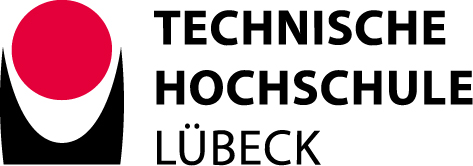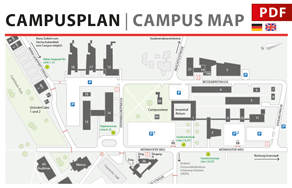Research Laboratory of Functional Nanomaterials for Renewable Energy Generation and Photonics
The use of renewable energies is the key to stabilize the carbon dioxide footprint of the Earth without impairing the development of our civilization.
The activities of the Research laboratory of functional nanomaterials revolve around the fabrication and characterization of intelligent nanostructures with precisely controlled parameters which constitute the basis for the new generation of renewable energy generators, in particular the photovoltaic and thermoelectric units. The nanotechnology allows to take advantage of cheap, common, non-toxic, and sustainable materials.
The Laboratory maintains an extensive network of international collaborations with scientific institutions and industry, in order to obtain functional materials which cannot yet be fabricated on-site. Furthermore, we cooperate closely with theoretical groups supporting our experiments computer-based quantum simulations.
- Photovoltaics
In this area, the nanostructures are deployed in order to maximize the light absorption in the devices. Further applications take advantage of the quantum effects occurring on the nanoscale in order to engineer the bandgap in the artificial semiconductors and thus improve the spectral properties of the photovoltaic generators (wide-band tandem solar cells).
The potential of organic materials has also been recognized in the area. Functional materials extracted from naturally grown maritime organisms allow to construct cheap photovoltaic generators with much smaller CO2 fabrication footprint.
In our group, the innovative materials undergo photovoltaic characterization, in particular concerning the quantum efficiency, spectral sensitivity, and electric properties. The measurements are performed using a specialized solar simulator (a highly stable and gauged lamp imitating the sun) in laboratory as well as in the field over long time period using the real sun, in order to probe stability of the generators under real-life conditions.
- Thermoelectrics
Thermoelectric generators allow the conversion of a stream of heat caused by temperature gradients directly into electric energy. They are robust, small, and quiet as they do not require moving parts. They can also be used for cooling in which case they are called Peltier elements.
The deployment of nanostructured materials in thermoelectric generators is an extremely promising strategy in order to increase the efficiency (the figure of merit) of these devices. In particular, the nanostructures feature often a reduced thermal conductivity without sacrificing the value of Seebeck coefficient. These two parameters are typically coupled in the bulk systems. Another factor influencing the choice of materials we work with is the sustainability and the carbon-dioxide footprint of their fabrication process.
The research of the laboratory in this area focuses on the advanced full thermoelectric characterization of bulk systems and nanostructures, in particular electric conductivity, Seebeck coefficient, and thermal conductivity using 3-ω method.
Links to Specialist Groups:
Materialien für Speicher- und Regenerative Energiesysteme
Photovoltaik
Umwelt- und Klimaschutz
Publications, peer-reviewed
2022
Buczek, N., Hanke, M., Buczek, P., Dubslaff, M., Tonkikh, A., Fuhrmann, B., Leipner, H.S.: Elastic behavior of metal-assisted etched Si/SiGe superlattice nanowires containing dislocations, AIP Advances, 12: 045006, 2022.
2021
Paischer, S., Buczek, P., Buczek, N., Eilmsteiner D., Ernst, A.: Eigenmodes of a disordered FeCo magnonic crystal at finite temperatures, Journal of Physics: Condensed Matter, 33: 335804, 2021.
Paischer S., Buczek P. A., Buczek N., Eilmsteiner D., Ernst A.: Spin waves in alloys at finite temperatures: Application to the FeCo magnonic crystal, 10.1103/PhysRevB.104.024403.
2020
Buczek, P., Buczek, N., Vignale, G., Ernst, A.: First-principles perspective on magnetic second sound, Physical Review B, 101: 214420, 2020.
Fischer G., Zubizarreta X., Marmodoro, A., Hoffmann, M., Buczek, P., Buczek, N., Däne, M., Hergert, W., Şaşıoğlu, E., Galanakis, I., Ernst, A.: Effect of correlation and disorder on the spin-wave spectra of Pd2MnSn, Ni2MnSn, and Cu2MnAl Heusler alloys: A first-principles study, Phys. Rev. Materials 4: 064405, 2020.
2018
Buczek, P., Thomas, S., Marmodoro, A., Buczek, N., Zubizarreta, X., Hoffmann, M., Balashov, T., Wulfhekel, W., Zakeri, K., Ernst A. Spin waves in disordered materials, Journal of Physics: Condensed Matter, 30: 423001, 2018.
2017
Buczek, P., Thomas, S., Marmodoro, A., Buczek, N., Zubizarreta, X., Hoffmann, M., Zakeri, Kh., Ernst, A.: Spin waves in disordered materials, Scientific Highlight Of The Month, No. 138, 2017.
2016
Buczek, P., Sandratskii, L., Buczek, N., Thomas, S., Vignale, G., Ernst, A.: Magnons in disordered nonstoichiometric low-dimensional:magnets, Physical Review B, 94:054407, 2016.
Until 2015 Prof. Nadine Buczek published her works under her birth name Geyer
2015
Geyer, N.: Titelbild der Zeitschrift Nanotechnology 26: 24, Ausgabe: 19.06.2015.
Geyer, N., Wollschläger, N., Fuhrmann, B., Tonkikh, A., Berger, A., Werner, P., Jungmann, M., Krause-Rehberg, R., Leipner. H. S.: Influence of the doping level on the porosity of silicon nanowires prepared by metal-assisted chemical etching. Nanotechnology, 26:245301, 2015.
2013
Geyer, N., Fuhrmann, B., Leipner, H. S., Werner, P.: Ag-mediated charge transport during metal-assisted chemical etching of silicon nanowires. Applied Materials and Interfaces, 5: 4302, 2013.
2012
Geyer, N., Fuhrmann, B., Huang, Z., de Boor, J., Leipner, H. S., Werner, P.: Model for the mass transport during metal-assisted chemical etching with contiguous metal films as catalysts. The Journal of Physical Chemistry, 116:13446, 2012.
Homonnay, N., Geyer, N., Fuhrmann, B., Leipner, H. S.: Advanced colloidal lithography for sub-100 nm lift-off structures. Vacuum, 86:1232-1, 2012.
Tonkikh, A., Geyer, N., Fuhrmann, B., Leipner, H. S., Werner, P.: Pathway of porous silicon formation inside Si nanowires throughout metal assisted etching. Materials Research Society Symposium Proceedings 1408, MRSF11, 2012.
Bauer, J., Weise, N., Rauschenbach, B., Geyer, N., Fuhrmann, B.: Shape evolution in glancing angle deposition of arranged Germanium. Journal of Applied Physics, 111: 104309, 2012.
2011
Leipner, H. S., Geyer, N., Syrowatka, F., Cheng, H., Fuhrmann, B.: Fabrication of complex structures with an array of nanopinhole cameras. Proceedings of SPIE – The international society for optical engineering, 81020W-1, 2011.
Ou, X., Geyer, N., Kögler, R., Werner, P., Skorupa, W.: Acceptor deactivation in individual Si NWs: From thick to ultrathin. Applied Physics Letters, 98:253103-1, 2011.
Huang, Z., Liu, L., Geyer, N.: Quasi-radial growth of metal tube on Si nanowires template. Nanoscale Research Letters, 6:165, 2011.
Huang, Z., Geyer, N., de Boor, J., Werner, P., Gösele, U.: Metal-assisted chemical etching of silicon: A review. Advanced Materials, 23:285, 2011.
2010
Huang, Z., Geyer, N., Liu, L. F., Li, M. Y., Zhong, P.: Metal-assisted electrochemical etching of silicon. Nanotechnology, 21:465301-1, 2010.
Huang, Z., Shimizu, T., Senz, S., Zhang, Z., Geyer, N., Gösele, U.: Oxidation rate effect on the direction of metal-assisted chemical and electrochemical etching of silicon. The Journal of Physical Chemistry C, 114 (24), 10683, 2010.
Wolfsteller, A., Geyer, N., Ngyuen-Duc, T.-K., Das Kanungo, P., Zakharov, N. D., Reiche, M., Erfurth, W., Blumtritt, H., Werner, P., Gösele, U.: Comparison of the top-down and bottom-up approach to fabricate nanowire-based Si/Ge heterostructures. Thin Solid Films, 518:2555, 2010.
De Boor, J., Geyer, N., Wittemann, J. V., Gösele, U., Schmidt, V.: Sub-100 nm silicon nanowires by laser interference lithography and metal-assisted etching. Nanotechnology, 21:95302-1, 2010.
2009
Geyer, N., Huang, Z., Fuhrmann, B., Grimm, S., Reiche, M., Nguyen-Duc, T.-K., de Boor, J., Leipner, H. S., Werner, P., Gösele, U.: Sub-20 nm Si/Ge superlattices nanowires by metal-assisted etching. Nano Letters, 9:3106, 2009.
Huang, Z., Shimizu, T., Senz, S., Zhang, Z., Zhang, X., Lee, W., Geyer, N., Gösele, U.: Ordered arrays of vertically aligned [110] silicon nanowires by suppressing the crystallographically preferred etching directions. Nano Letters, 9:2519, 2009.
De Boor, J., Geyer, N., Gösele, U., Schmidt, V.: Three-Beam interference lithography: Upgrading Lloyd’s interferometer for hexagonal patterning at a single shot. Optical Letters, 34:1738, 2009.
Schade, M., Geyer, N., Fuhrmann, B., Heyroth, F., Leipner, H. S.: High-resolution analytical electron microscopy of catalytically etched silicon nanowires. Applied Physics A, 95:325, 2009.
Schade, M., Geyer, N., Fuhrmann, B., Heyroth, F., Werner, P., Leipner, H. S.: High resolution analytical electron microscopy of silicon nanostructures. Physica status solidi (c), 6:690, 2009.



